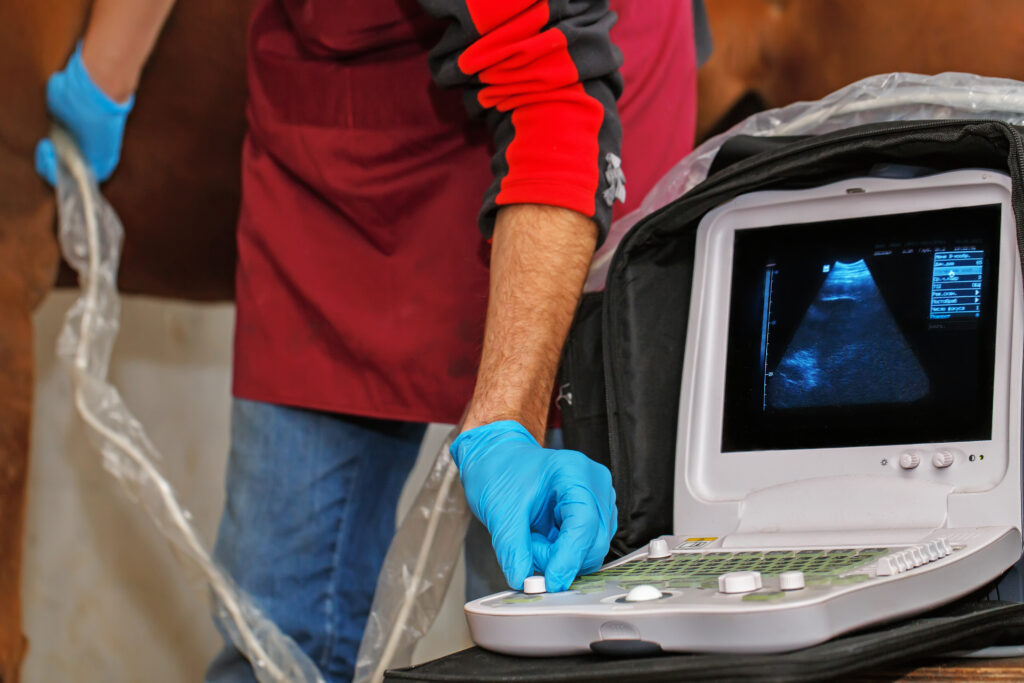
Equine veterinarians commonly place IV catheters in critical care cases. In most cases, this procedure runs smoothly. However, in some instances veterinarians using over-the-wire (OTW) catheters lose the guidewire in the jugular vein at the time of catheter placement. In a recent study, researchers reviewed the lost wire’s effects and outcomes in horses.
Over-the-Wire (OTW) Technique
With an OTW technique, the veterinarian inserts an introducer needle into the jugular vein through which they pass the guidewire. The vet then removes the needle, leaving the guidewire in place. They pass the catheter over the wire and finally remove the wire. Many modern catheters are over-the-needle extended-use devices in which a long needle is inserted inside the polyurethane, flexible catheter. Once the veterinarian observes blood flashback at the top of the needle to indicate correct placement in the jugular vein, they slide the polyurethane catheter all the way into the vein and remove the needle. Veterinarians who use the OTW technique should understand the consequences of guidewire loss.
Study on Guidewire Loss in OTW Procedures

This multicenter, retrospective study only included horses with detailed medical records of signalment, diagnosis, and case progression and outcome. Horses ranged in age from 1 to 19 years. All catheters were 14-gauge OTW and placed in the direction of the heart.
At the time of guidewire loss in the vein, no horses showed any abnormal clinical signs. Plain radiographs of 10 horses identified the wires, with seven of 10 located in the jugular groove region. Ultrasound located guidewires in two horses within the jugular vein at the thoracic inlet and another two in the region of the jugular groove. Two horses had radiography and fluoroscopy to locate their lost guidewires. The authors noted that in nearly all cases, plain radiography is an excellent imaging modality to identify the lost IV guidewires.
Echocardiography performed on seven horses did not detect any cardiac abnormalities. The guidewire was found in the heart in four of these seven horses. It started in the right atrium and moved to a pulmonary artery, right atrium and ventricle, right ventricle and cranial vena cava, and apex of right ventricle. Later examination with echocardiography of three horses showed the guidewires remained in their hearts, but none experienced any cardiac changes, and the wires had not migrated. ECG did not detect arrhythmias in two of these horses months later.
Guidewire Retrieval
Successful retrieval occurred in eight (62%) of the 13 horses with lost guidewires, either through a percutaneous endovascular approach (n = 2) or venotomy (n = 6). In those eight, the wire was lodged in the jugular vein, not in the heart or lung vasculature. In three of these eight, retrieval occurred four days following the incident.
Long-Term Effects
Those horses in which the guidewire remained in situ had no adverse effects, with the exception of one that developed persistent jugular vein thrombosis. All horses with a lost OTW performed at their previous level of activity with no complications.
Reference
Hobbs KJ, Young KAS, Nannarone S, et al. Intravenous loss of over-the-wire catheter guidewires in 13 horses. Journal of Veterinary Internal Medicine, Nov 2023; DOI: 10.1111/jvim.16960








